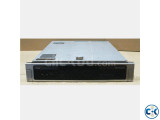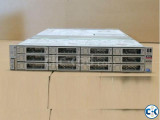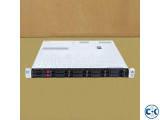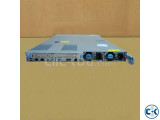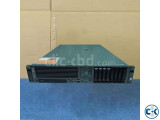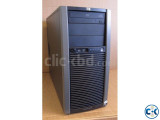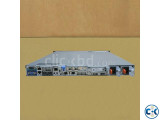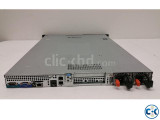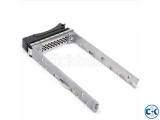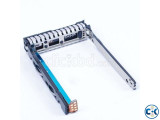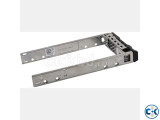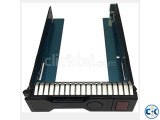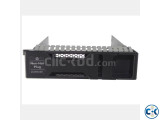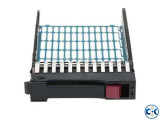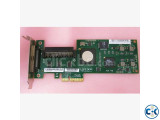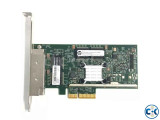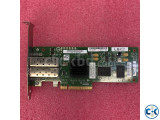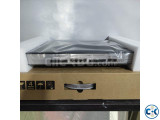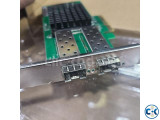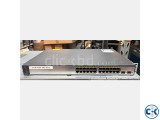My ClickBD
Brand new
DES-3526 xStack Managed 26 Port Fast Ethernet Stackable L2 S
Lowest price in Bangladesh:
Seller info
Sold by:
gmsharif
Member since:
01 Feb 2008
Location:
Dhaka Mirpur
Safety tips:
Don’t pay in advance
Meet in a safe & public place
Meet in a safe & public place
Description
DESCRIPTION for DES-3526 xStack Managed 26 Port Fast Ethernet Stackable L2 S price in Bangladesh
|
• 24 Fast Ethernet + 2 Combo GE/SFP Ports • Flexible Web, Telnet, Serial Console Management • Virtual Stacking with Single IP Management The D-Link® xStack™ DES-3526 is a high-performance, managed, stackable Layer 2 switch that provides an ideal solution for workgroups and departments. D-Link Single IP Management (SIM) allows to cluster up a virtual stack of up to 32 DES-3526 switches dispersed switches with fewer distance limitation through a single IP address. The clustering environment spans buildings, making it perfect for businesses that require multiple building deployment. The xStack switch also provides comprehensive security for edge access such as Access Control List, DHCP server screening, and DoS attack prevention. Non-Blocking Switching The D-Link xStack DES-3526 provides non-blocking switching solution for a 10/100 fast Ethernet connection. The DES-3526 supports 24 10/100Mbps ports, with 2 gigabit 10/100/1000BASE-T ports. These gigabit copper ports will be disabled if the two 1000BASE-X SFP are used - known as dual personality or combo ports. The DES-3526 has a non-blocking bandwidth of 8.8Gbps and has a redundant power option for mission critical apps. D-Link Safeguard Engine and Security The DES-3526 incorporates advanced mechanisms to detect an attack against the central processing unit of the switch and to take corrective action on the attacking interface. When a Denial of Service (DoS) attack is waged against the xStack switches, the D-Link Safeguard Engine detects the threat and prevents overload of the central processor thus insuring network integrity and helping to maintain open network bandwidth channels. In addition, the DES-3526 supports 802.1x authentication, which is a secure means to allow users to log onto your network. When used in conjunction with a RADIUS server, 802.1x requires each user workstation attached to the xStack switches to provide a username and password before gaining access to the local area network. Other security features include access control list, which an administrator can restrict the access of a network through a variety of means including MAC address, IP, UDP/TCP, and even VLAN ID. For edge network security, the DES-3526 supports features such as DHCP server screening, client filtering, and IP-MAC-Port Binding to prevent security breaches such as rogue DHCP server, man-in-the-middle attacks or IP spoofing. For clients with Windows® XP SP3, Windows Vista®, or servers with Microsoft® Windows Server 2008, the DES-3526 works in conjunction with the Microsoft® Network Access Protection (NAP) as part of an ecosystem that enforces compliance with network health policies. xStack switches will grant network host access only if it complies with IT security policies such as up-to-date anti-virus signatures and operating system patches. This prevents an infected client or server from gaining access and further contaminating the network. Ease of Management DES-3526 supports SNMP v1/2/3 so traps can be set on abnormal events and information can be polled to maximize the productivity of the network. Other standard management features are also supported including RMON, intuitive Web-based graphic interface, and industry-standard Command Line Interface (CLI). IP Clustering Stackable The xStack DES-3526 includes D-Link Single IP Management Technology (SIM), which allows a set of switches to be managed by a single IP, regardless of geographical locations. Traffic running across units in this virtual stack utilize full-duplex interfaces and network wires, eliminating costly and cumbersome cables. Without any stacking cables, cable distance barriers, and physical stacking limitations, your stack can be comprised of units that are located anywhere on the network, minimizing the impact of any single point of failure. Furthermore, multiple xStack switches can be configured, monitored, and maintained from any workstation running a Web browser through one unique IP address. The stack is managed as a single object, with all units identified by a single IP address. You can see a Tree View of the members of the stack and a network topology showing the locations of the units and their link information. This simple yet powerful Web-based management eliminates the need for you to install expensive SNMP network management software. Add up to 32 switches per stack, not limited to any specific D-Link models. With embedded SIM, you can expand your Ethernet stack to include L3 core Gigabit and chassis based switches to accommodate your network growth. Voice and Video Applications For today’s business, having voice, data and video on the same network is common practice. This challenge is met by the D-Link DES-3526, which supports 802.1p with 4 queues. The administrator can designate the priority of the traffic based on a variety of means including IP or MAC address, so that voice data always is always clear and jitter free. Video traffic can also be assigned with the same priority. In addition, the D-Link DES-3526 provides IGMP Snooping, which allows the forwarding of multicast packets such as streaming audio, video, without increasing network broadcast congestion. By snooping IGMP registration information within a frame, a list of workstations who have joined the multicast group is created. This list then allows the switch to intelligently forward packets to only the appropriate member workstations. In conjunction with 802.1Q VLANs, Quality of Service and security can be achieved on a network infused with data traffic. For other multimedia-on-demand applications, such as IPTV deployments, the xStack DES-3526 provides advanced features for easy video streaming management. For example, this xStack supports per port multicast stream control, which allows a service provider to assign limited multicast addresses per port. This means it can act as a security control pre-configured channels for each subscriber on a port level to prevent unauthorized multicast access. DES-3526 also supports IGMP multicast VLAN, which eliminates duplicate multicast traffic being sent to clients in different VLANs and thus removing bottlenecks in the uplink port. |






